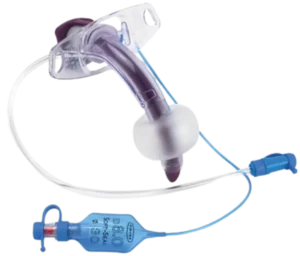Tracheostomy
Home | Voice, Throat & Swallowing | Tracheostomy
What is a tracheostomy?
 A tracheostomy (or tracheotomy) is a surgical procedure to create an opening through the neck into the trachea (windpipe). A tube is usually placed through this opening to provide an airway and to remove secretions from the lungs. This tube is called a tracheostomy tube or trach tube.
A tracheostomy (or tracheotomy) is a surgical procedure to create an opening through the neck into the trachea (windpipe). A tube is usually placed through this opening to provide an airway and to remove secretions from the lungs. This tube is called a tracheostomy tube or trach tube.
When is a tracheostomy required?
A tracheostomy may be required if you have:
- A large object blocking the airway which cannot be removed
- An inherited abnormality of the larynx or trachea
- Breathed in harmful material such as smoke, steam, or other toxic gases
- Cancer of the head and neck region, which can affect breathing
- Breathed in harmful material such as smoke or steam
- Paralysis of the muscles that affect swallowing or breathing
- Severe neck or mouth injuries
- Prolonged intubation in ICU
What happens after a tracheostomy?
Initially, it may be impossible for the patient to talk or make sounds; they may have to communicate with the written word. Most patients require 2-3 days to adapt to breathing through a tracheostomy tube.
If the tracheostomy is temporary, the tube will eventually be removed. Healing will occur quickly, leaving a minimal scar. If the tracheostomy tube is permanent, the hole remains open and may require surgical closure when no longer needed.
After training and practice, most patients can learn to talk with a tracheostomy tube. Patients or family members learn how to take care of the tracheostomy during the hospital stay. Home-care services may also be available.
What can i do when i have a tracheostomy?
Normal lifestyles are encouraged and most activities can be resumed. When outside, a loose covering (a scarf or other protection) for the tracheostomy stoma (hole) is recommended. Patients must adhere to other safety precautions regarding exposure to water, aerosols, powder, or food particles as well.
Voice Conditions
Throat / Swallowing Conditions
Procedures & Treatments
- Tracheostomy
- Microlaryngoscopy with Phonosurgery
- Flexible Nasoendoscopy
- Direct Laryngoscopy
- Removal of ingested foreign body

